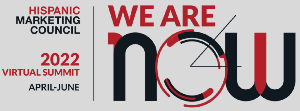Research
Ad Engagement Increases With Each Audio Exposure

The results are especially powerful in a media landscape where advertisers are yearning for audience attention. Audio simply does not erode. It hooks listeners right out of the gate and delivers strong engagement and consumer action at even the highest levels of exposure.
Broad Variations in Age Structure By State and County

Florida’s median age in 2021 was 42.7, higher than the national median of 38.8 and that of neighboring Georgia (37.5). But even within Florida, the age structure varies widely, from 32.1 in Leon County to 68.3 in Sumter County — the highest median age of any county in the nation.
Nearly Six in 10 U.S. Workers Say Their Paycheck Is Not Enough to Support Themselves or Their Families

Nearly six in 10 U.S. workers are concerned their paycheck is not enough to support themselves or their families as employees look to keep up with the rise of inflation, according to the latest American Staffing Association Workforce Monitor online survey.
2/3 of Global Marketers lack confidence in their DATA

To spot sudden, disruptive changes in customer and market behavior, modern marketers need high-velocity data marketing, according to a new report by the Chief Marketing Officer (CMO) Council and GfK. These data systems need to be agile and adaptable with the ability to acquire real-time, relevant data signals and close the gap between data, insights and action.
Nation Continues to Age as It Becomes More Diverse

The last two decades have seen the country grow continuously older. Since 2000, the national median age – the point at which one-half the population is older and one-half younger – has increased by 3.4 years, with the largest single-year gain of 0.3 years coming in 2021, bringing it to 38.8 years, according to newly released 2021 Population Estimates from the U.S. Census Bureau. Median age for most states also increased from 2020 to 2021, indicating their populations are getting older overall.
Edison Research’s “Share Of Ear” Q1 2022: Among Registered Voters, AM/FM Radio Dominates Ad-Supported Listening With A 75% Share, Podcasts And AM/FM Radio Streaming Surge, And AM/FM Radio Has An 89% Share In The Car

The Q1 2022 report provides an opportunity to study listening among key voter segments and examine ad-supported audio use by location and demographic.
Global 2022 Gen Z and Millennial [REPORT]

They are struggling with financial concerns, while trying to invest in environmentally sustainable choices. They feel burned out, but many are taking on second jobs, while pushing for more purposeful—and more flexible—work. They press their employers to tackle climate change, particularly when it comes to efforts they can get directly involved in, but businesses may still be missing opportunities to drive deeper and broader climate action. And they have inspired organizations to take action to address workplace mental health challenges, but many don’t feel this is resulting in any tangible change for employees.
Relationship between brand cultural relevance and the amount consumers are willing to pay for brands [REPORT]

The study, “Cultural Relevance Drivers: Understanding the Building Blocks of Brand Relevance,” reveals that brands clearly benefit from cultural involvement even to the extent of people willing to invest more in those that are perceived as more culturally relevant
Sports fandom is increasing, powered by new digital platforms [REPORT]

Study by Nielsen and LaLiga Tech shows younger viewers are following more sport than older counterparts, but with a heavy preference towards streaming and mobile experiences, including Fantasy games.
Seeking authenticity [REPORT]

Global attitudes about the LGBTQ+ community have evolved dramatically over the past decade or so, and the community is acutely aware of this. These changing attitudes vary by country, which means perceptions about the community can vary as well.
U.S. teens are more likely than adults to support the Black Lives Matter movement

American teenagers are more likely than adults to express support for the Black Lives Matter movement, according to two Pew Research Center surveys fielded this spring.
Q1 2022 Global Connected TV (CTV) Ad Supply Chain Trends [REPORT]

Pixalate released the Q1 2022 Global Connected TV (CTV) Ad Supply Chain Trends Report, a comprehensive analysis of the state of open programmatic CTV advertising through Q1 2022.
HMC devotes a week of its annual summit to latest multicultural research

As more brands commit to DEI practices and increases in multicultural investment, the Hispanic Marketing Council (HMC) has devoted a week of its free and virtual 2022 Annual Summit to business-building multicultural research, featuring leaders from Kantar, ThinkNow and Claritas. Moderated by HMC Research Chair Nancy Tellet, founder, brand & consumer navigator at PureClarity LLC, these webinars will cover inclusive advertising, investing and money management, and consumer behavior.
How US consumers are feeling, shopping, and spending—and what it means for companies

The latest Consumer Pulse survey shows that, across America, people have simultaneously embraced new behaviors and reverted to old ones. What will they do next?
Current Financial State of the U.S. Latino Community

mitú, in partnership with premier multicultural marketing and communications agency The MRKT, released the second edition of the mitú InTell Series of studies focusing on the current financial state of the US Latino population. Some of the discoveries indicate that Latinos lead in certain aspects when compared to the general population, such as in the use of financial technology and in the early adoption of cryptocurrencies and NFTs but fall behind in other aspects including home ownership and in the use of banking products and services.
About 6 million U.S. adults identify as Afro-Latino

Afro-Latino identity is a distinct one, with deep roots in colonial Latin America. As a result, it can often exist alongside a person’s Hispanic, racial or national origin identities. The life experiences of Afro-Latinos are shaped by race, skin tone and other factors, in ways that differ from other Hispanics. And though most Afro-Latinos identify as Hispanic or Latino, not all do so, according to new Pew Research Center estimates based on a survey of U.S. adults conducted from November 2019 to June 2020.
The Vast Majority of Americans Like Their Neighbors

Nearly nine out of ten Americans (86 percent) like their neighbors, a sentiment that remains high across all major demographics including age, sex, race and even political party, according to results from a national Xcelerant omnibus survey conducted on behalf of Fathom Realty, a national, cloud-based, real estate brokerage.
More than half of Americans in their 40s are ‘sandwiched’ between an aging parent and their own children

As people are living longer and many young adults are struggling to gain financial independence, about a quarter of U.S. adults (23%) are now part of the so-called “sandwich generation,” according to a Pew Research Center survey conducted in October 2021. These are adults who have a parent age 65 or older and are either raising at least one child younger than 18 or providing financial support to an adult child.
FOLLOW THE GROWTH: Engage The U.S. Hispanic Audience To Achieve DEI at Scale [ VIEW WEBINAR HERE FOR FREE]

The 2020 Census made it crystal clear that the time to act is now. Companies who aren’t engaging Hispanics with targeted efforts are at risk of being left behind. At the same time, brands and their agencies are dealing with the complex challenges of finding premium supply, achieving scale, and doing all of that in a culturally-relevant way. Join this C-suite panel as they discuss the challenges and opportunities they face in activating Hispanic audiences for critical business growth.
Marketing Report: Era of Alignment [REPORT]

Despite the difficulty of the past two years, brands continue to re-balance their marketing efforts after widespread pullbacks in 2020, especially with respect to traditional mass reach channels like TV and radio. As they rebalance, agility remains critical. Consumer behavior isn’t just in flux—it has changed.



























